Replacing a Circuit Breaker Panel: How to Choose a New Panel
Enjoy reading the latest DIY articles and saving money?
Receive our latest helpful hints, tricks and savings, directly to your inbox.
Posted March 5, 2021
If you’re like many people, the idea of even flipping a switch on your circuit breaker panel to turn the power back on makes you nervous. After all, everyone knows that electricity is quite hazardous. So how do you go about replacing a circuit breaker panel? In fact, how do you even know you need to replace yours? That’s what we’ll discuss in this article.
We’ll begin with a brief look at what a circuit breaker panel is and how it works. Then we’ll continue by explaining when and how to replace it. We’ll also cover the process and criteria for circuit breaker replacement.
What Is a Circuit Breaker Panel?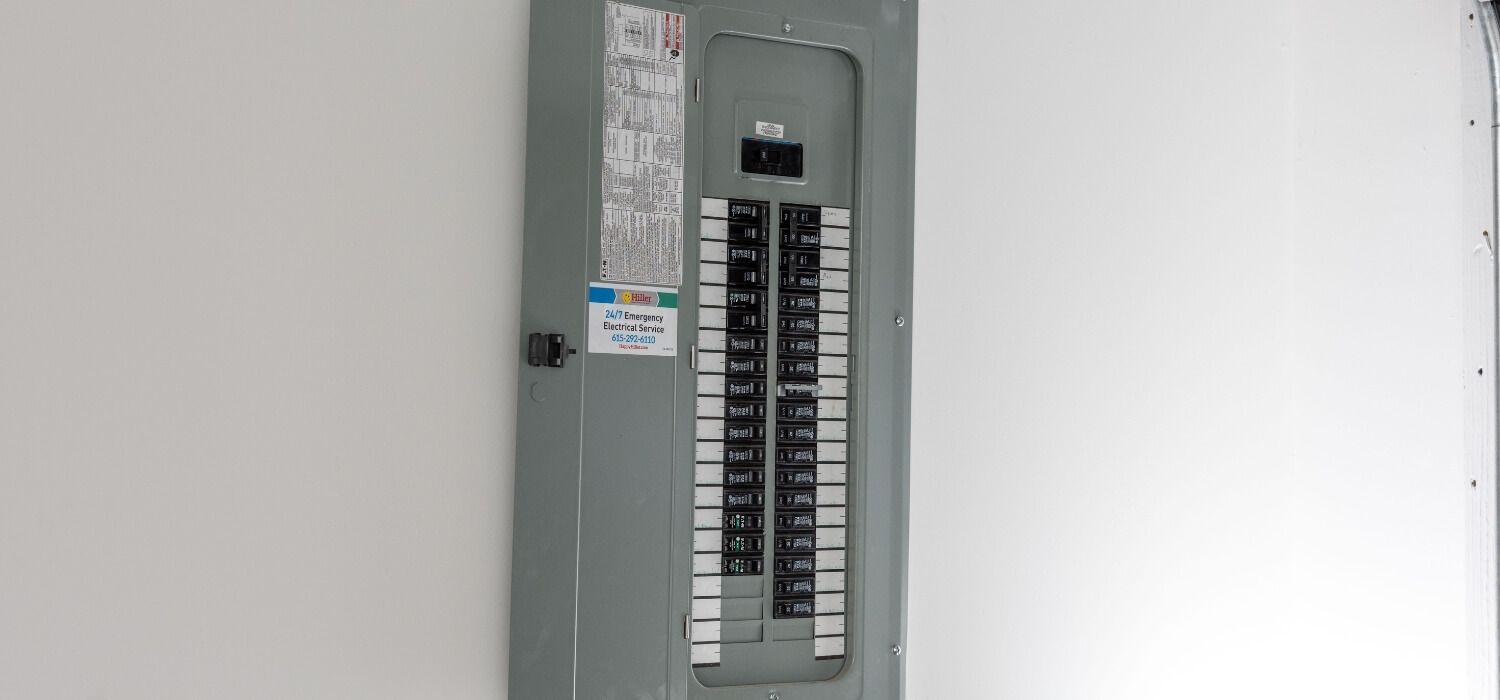
The purpose of a circuit breaker panel (also called the main electrical service panel) is to connect wires from the utility company with those comprising your home’s internal electrical system.
As electricity flows to your house, it passes through the meter, the supply system, and your circuit breaker panel wiring. At the place where the electric lines enter the panel, one primary circuit (connected to the power grid) splits into subsidiary circuits.
Circuit breakers are switches that automatically shut off an overloaded circuit to prevent fires, electrocutions, and other serious dangers caused by improperly contained or maintained electricity.
How to Know When You Need New Circuit Breakers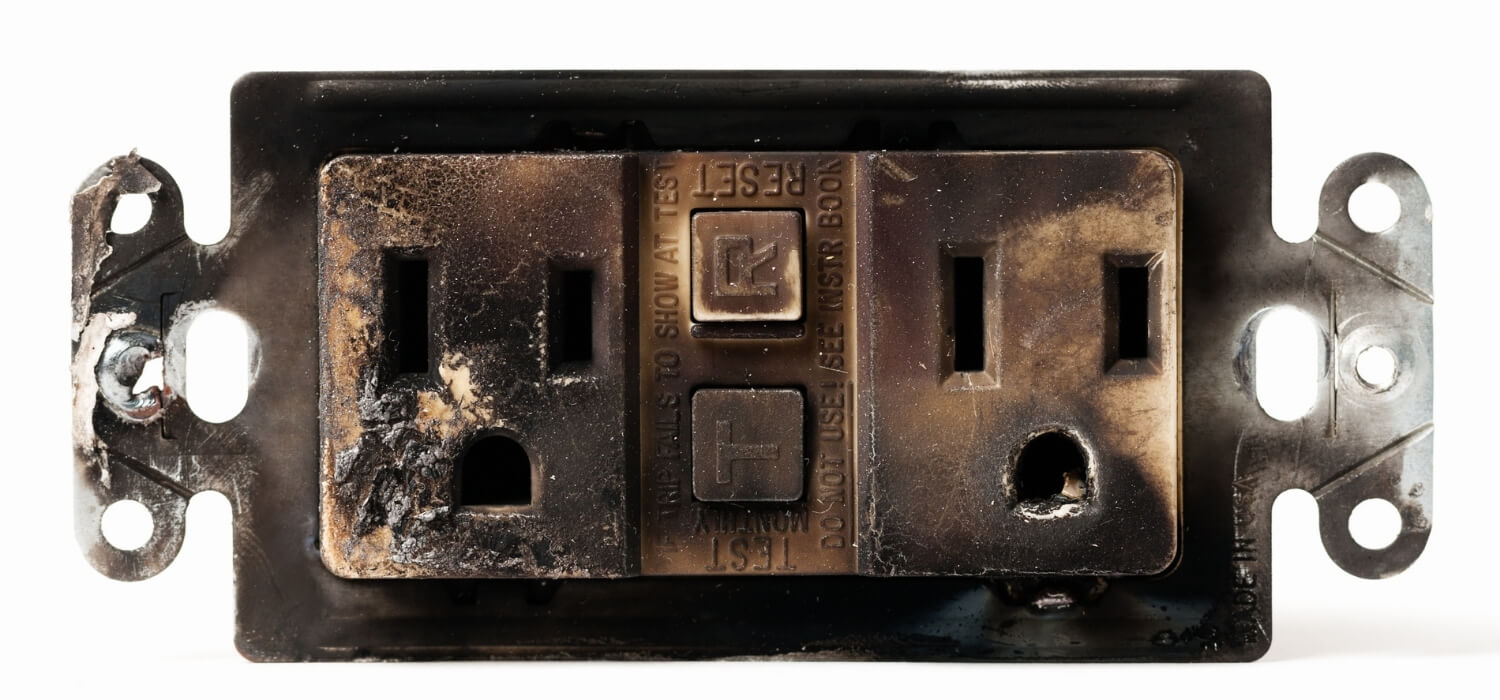
Do you always seem to be flipping breaker switches (or replacing) fuses because of circuit overloads? Are your outlets warm to the touch, or do they show burn marks? Do the lights in your home sometimes flicker or flash off and on?
If so, it might be that your electrical system is carrying too high a load for the increased usage common to most households today.
It may be time to upgrade your panel. And if you still have a fuse box, you should give serious thought to replacing it with a circuit breaker panel.
The owners of single-family homes are responsible for all issues related to the electric service panel. However, most of them will need help determining when a service upgrade and replacing the circuit breaker panel are in order.
The age of the breakers is also important to know. The life expectancy of breakers is 25-30 years, which is also the same for your panel. It is important to know how old your panel is.
Preparing to Replace a Circuit Breaker Panel
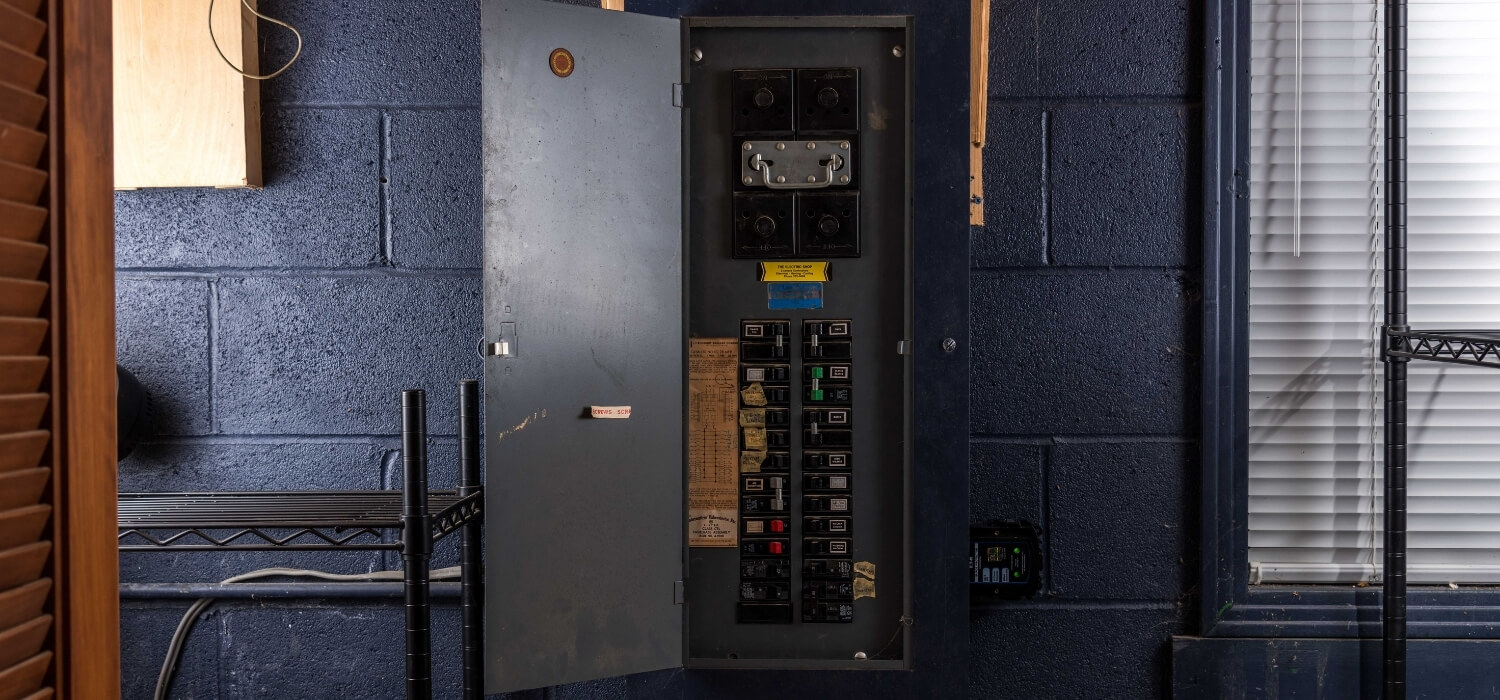
The vast majority of homeowners should never even think about replacing a circuit breaker panel as a DIY project. A panel replacement exposes the person doing it to potentially deadly voltage levels.
You should know that this job calls for at least one professional electrician. The cost to replace a circuit breaker panel runs from roughly $800 to over $3,000, depending on the various factors that come into play. Electricians can run into unforeseen problems or obstacles.
Once you have selected an electrician you are comfortable working with, they and you will both have to do some preparation before the work can begin.
Finding the Right Location
The best location for a new circuit breaker panel is determined by factors such as:
- Close to kitchens and other heavy load areas
- Preferably not in bathrooms (a practice often barred by municipal codes)
- In a reachable area of a spacious room
- No obstacles preventing easy access
- A well-illuminated area
Service panels are often located in garages or basements or under stairways. However, note that there is no problem having a panel in an open space in the main living area. Keeping it out of sight is a matter of preference.
We highly recommend consulting with an electrician before making a final decision about where to place the electrical panel. There are mitigating technical factors that should be taken into account.
Electrician’s Preparatory Work
The electrician can request an electrical permit from the relevant municipality. They need to schedule an inspection by the appropriate government agency, utility company, or other organization.
Homeowner’s Preparatory Work
The power to your home will be shut off by your utility company early in the morning, so be sure to prepare for a half to a full day without electrical power. For example, if you work at home using a computer, find an alternative like a nearby cafe.
Once the work is over, the designated inspector may have to check the installation work to ensure it is up to code. If everything looks good, the utility company will turn your power back on.
Choosing the Right Service Panel
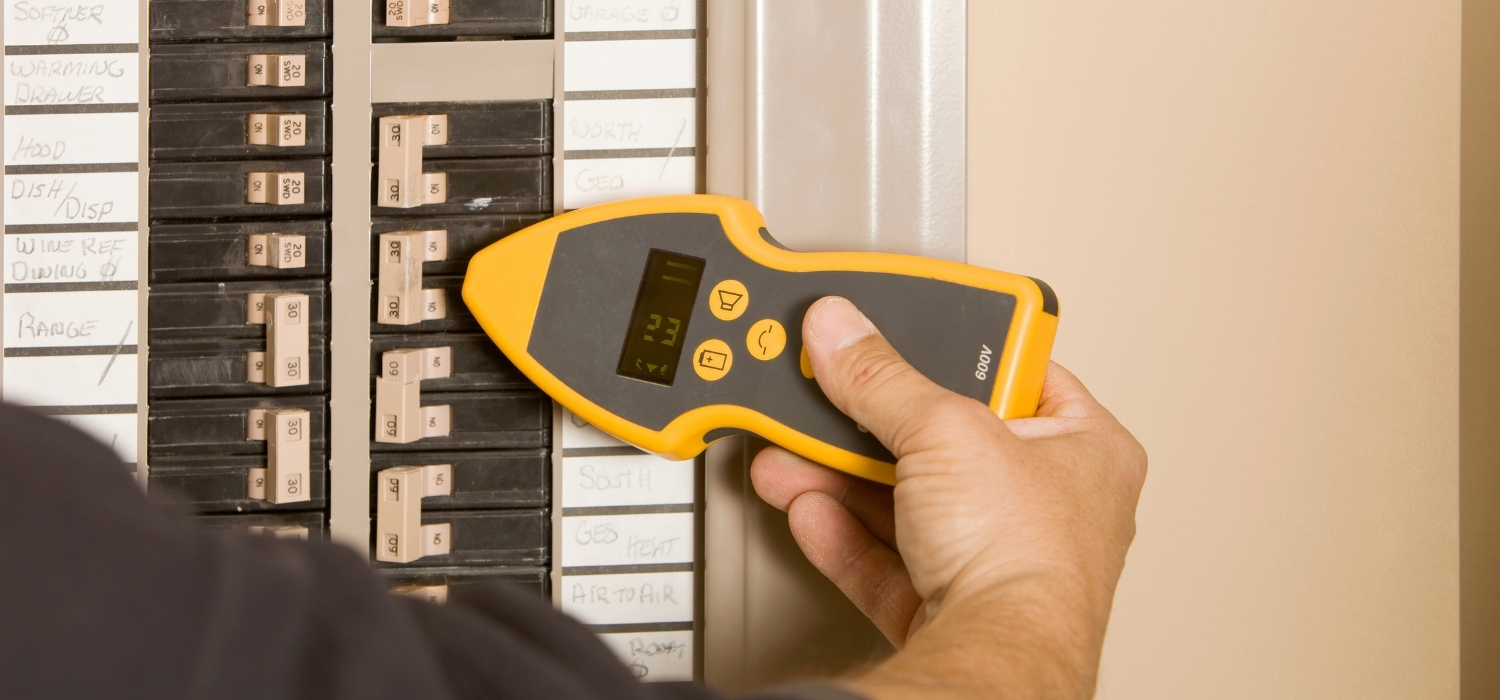
No one selects an electrical panel for their home based on personal taste or the panel’s visual appeal. You choose a circuit breaker panel based on the amount and intensity of electrical power your household consumes.
Determining the Right Size for a Service Panel
The size of your circuit breaker panel tells you how many electrical appliances or fixtures can run simultaneously. If you live in an all-electric home, you will need a larger panel.
If the structure uses a combination of electricity and gas, a smaller one should do. Don’t forget, either, that the appliances you use can make a difference in your panel’s usage.
Residential main breaker panels are available in four sizes, 100 amps, 200 amps, 225 amps, and 400 amps. Follow these steps to determine what size breaker box you need and round up your total amperage number to the nearest panel size.
Unless you foresee adding more energy-consuming household appliances or fixtures, this is how to know the right size for the panel. Note that if your circuit breaker is rated at 20 amps, it should only use 16 amps.
Circuit Breaker Panel Amperage
Amperage and voltage both refer to the strength of an electrical current. Where voltage is a measure of the pressure that allows electrons to flow, amperage is the electrons’ volume.
You should know the amperage capacity for your home when choosing either a new circuit breaker panel or circuit breaker panel replacement. If your home uses 150 amps of electricity, for instance, the breaker panel should be able to handle 150 or more amps.
However, circuit breakers that providing only 100 to 150 amps are more common in today’s homes. That’s why many homeowners have converted to a 200-amp service. Not to mention, doing so increases home value.
Circuit Breaker Types

When selecting or replacing a circuit breaker panel, consider the types of circuit breaker switches you’ll need.
- Single-pole circuit breakers (120 volts): generally used for lighter duty receptacles and lighting rated at 15-20 amps
- Double-pole circuit breakers (240 volts): for HVAC units, water heaters, and major appliances.
Be sure you have the right circuit breaker type for its intended use. For example, don’t use a single-pole circuit breaker for an electric clothes dryer, even if it means adding a new double-pole breaker.
If buying a circuit breaker panel, be sure it’s big enough to accommodate all the necessary single and double-pole circuits you will need.
We also should point out that not all circuit breakers have the same configuration. The most common type is the standard or panel mount circuit breaker, which has only the switch visible at the panel’s front. The wiring is concealed behind the panel.
Other types of circuit breakers include hi-amp circuit breakers and blade circuit breakers.
There are also three different ways in which a circuit breaker is reset:
Automatic Reset
This breaker type recycles continuously when the circuit is overloaded. It deflects and separates the contacts when heated. It will return to its original position once cooled—and then repeat until the situation concludes.
Modified Reset
This breaker type remains in the off (or tripped) position as long as there is power to the circuit. Once the electricity stops flowing, the breaker will reset.
Manual Reset
A breaker that’s manually reset is the one most people are familiar with. In this scenario, the breaker remains tripped until someone manually reactivates it.
Types of Circuit Breaker Panels
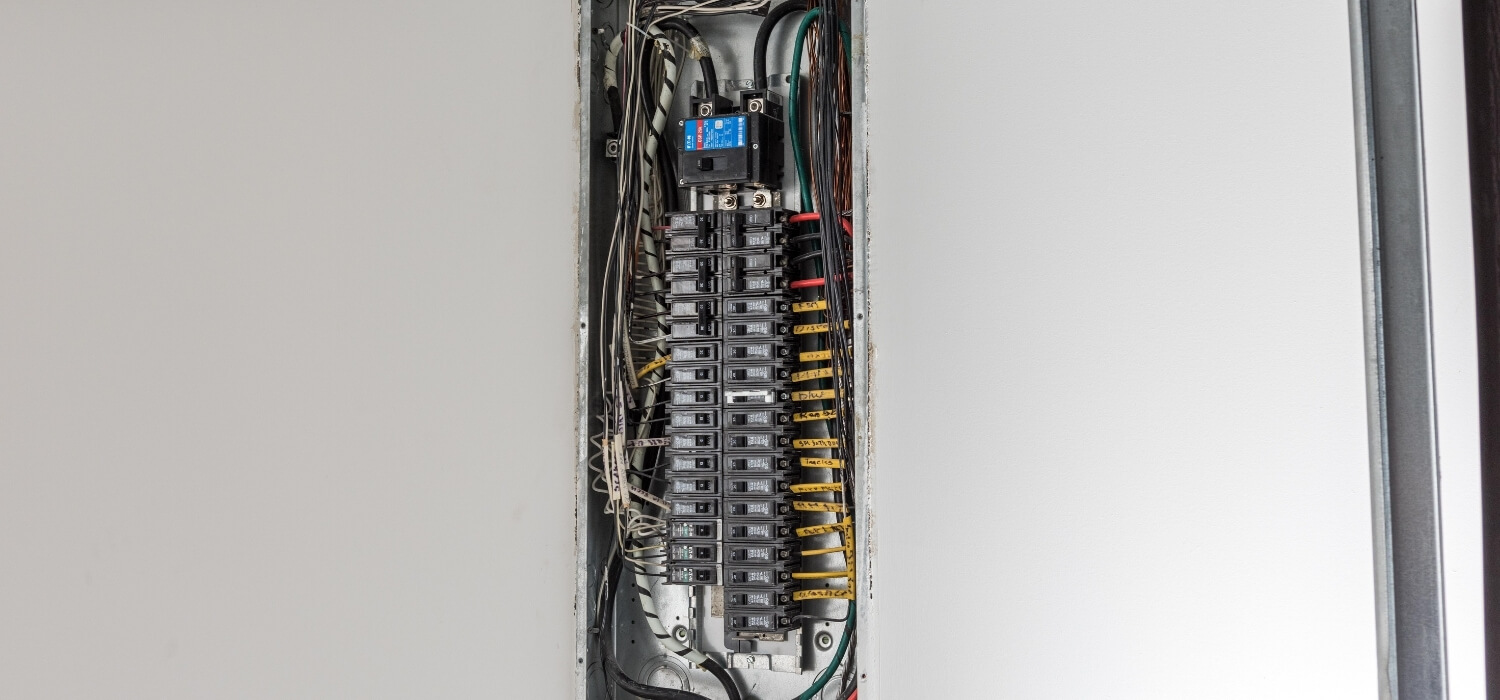
Most homeowners are familiar with their main breaker panels. Some also know of a secondary power cut-off switch near the electric meter and main power supply from the utility company power line.
However, other electrical panel types are worth knowing about should you ever need them—as is likely.
Main Breaker Panels
A built-in main breaker can shut off all power to your residence. You can install one of these indoors when the meter and feeder cable are within 10 ft. of the panel. Otherwise, the main breaker will be installed adjacent to the meter.
Main Lug Panels
The clamps or connectors that join two electrical devices are called electrical lugs. Electricians use when a permanent connection is not possible, such as connecting the load center at the meter to the main breaker panel.
A main lug-type load center doesn’t have its own main circuit breaker. Instead, these “add-on,” “secondary,” or “downstream” panels are added when circuit slots in the main breaker are full or a remote panel is desired.
If using the main lug panel as a sub-panel, it should be connected to a breaker at the main panel. Having separate disconnects at a meter helps firefighters cut power without having to enter the building.
Sub-Panels
Separate breaker panels typically contain new circuits. Use these when the main breaker panel doesn’t have enough slots to add circuits.
A sub-panel is also helpful when multiple circuits are necessary for a single area separated from the main structure. It could be, for example, an enclosed patio or external workshop.
Sub-panels let more power through but don’t increase the total energy coming into your home.
Transfer Switches
Do you live in an area where storms and black-outs are common? If so, you might own a permanent back-up power generator with an alternative power source, like propane or natural gas.
A transfer switch can be a main panel or a sub-panel that converts a portable generator’s power into electrical power. It does this through the home’s breaker panel.
A transfer switch is a sub-panel meant to convert a portable generator’s power into electrical power. It does this through the home’s breaker panel or from the electrical meter.
The generator can be wired directly to the panel, thereby enabling a seamless switch from the utility service to back-up power when the electricity goes out.
Circuit Breaker Panel Brands
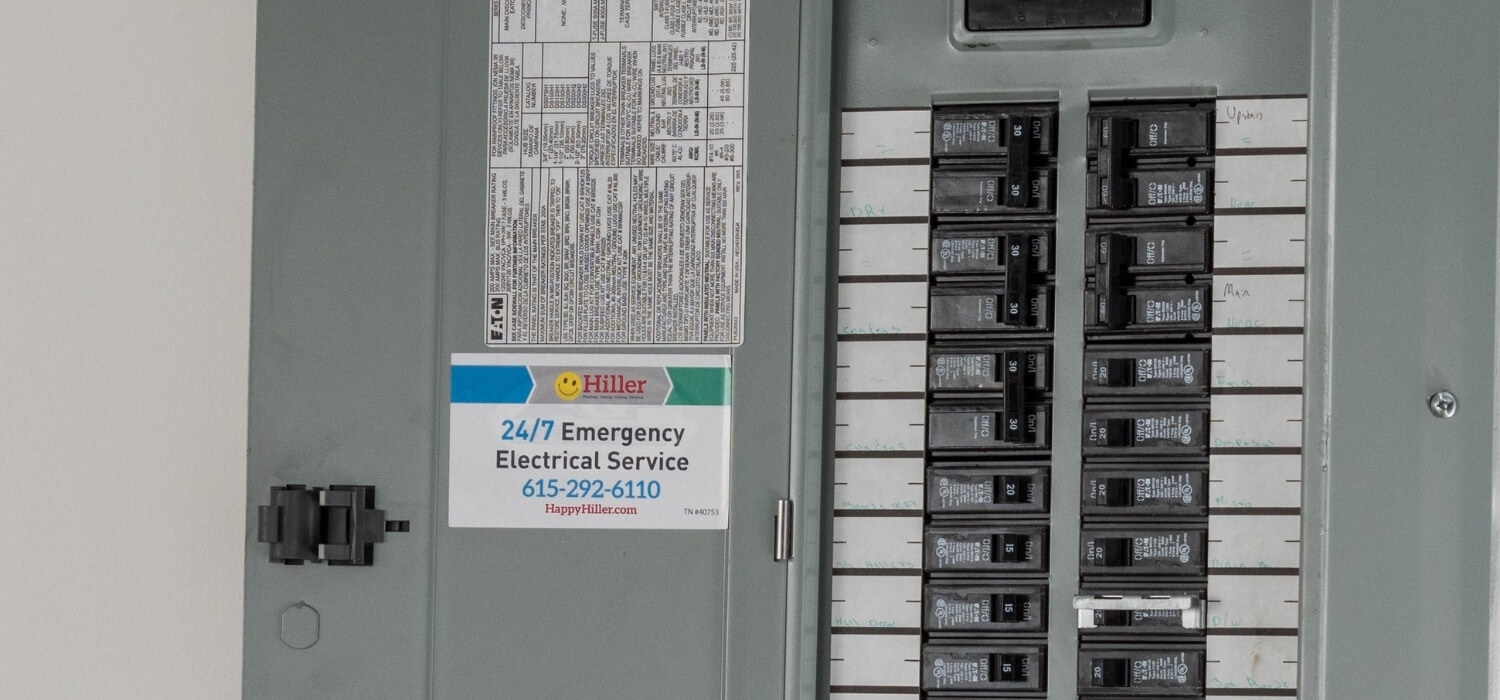
There are several circuit breaker manufacturers today. These include GE, Eaton, Leviton, Siemens, and Square D. Some of them have merged with or acquired older manufacturers that went out of business.
We bring this up because you might have electrical panel equipment remaining from one of the older companies. Ordinarily, you can find the needed parts online by looking up the name of the original manufacturer.
However, some—such as Federal Pacific and Zinsco—produced faulty equipment. Ask your electrician to check for any of these parts that might remain in your home. That way, you can replace those parts before they cause harm.
How to Buy a Circuit Breaker Panel

Most homeowners “buy” their electrical panels via their electricians. These electrical professionals have the depth of knowledge needed to make an appropriate choice. It can also save them having to exchange the panel purchased for a new one.
Besides, there’s a fair chance that you could have purchased a panel that’s incompatible with the circuit breaker panel wiring. It might have other issues too.
Before purchasing a breaker panel, an electrician checks with the local authorities and utility company. Both of you need to be sure the selected panel meets the municipal code requirements.
Ensuring a warranty for labor and materials is also very important in the buying process.
Working With an Electrician

Finding a conscientious and competent electrician is a gift. Be sure to make the most of it. Instead of risking life and limb trying to DIY some electrical project, especially one that involves replacing the circuit breaker panel, call a pro.
Not only can a professional electrician assume responsibility for most of the behind-the-scenes preparation, but they can also ease any worries you might have about working with high-voltage electricity.
Besides that, who better to help you with the circuit breaker panel labels you’ll be needing?
How Is the New Panel Working Out?

Replacing the circuit breaker panel should bring some positive changes to your home and the life you enjoy there. You can expect not to see any more unexpected flickering lights or feel nervous when unplugging something from an electrical outlet.
You can now feel confident augmenting or upgrading your home systems. Maybe buy that high-efficiency air conditioner you’ve wanted? Add a whirlpool tub? Or, replace your low-end, worn-out electric stove?
Don’t forget us, Happy Hiller, when you’re thinking about your future electrical needs (or wishes). Remember, our highly trained electricians and technicians will nearly always be available to help you out. Contact us to get started today.
 Daily Promotion
Daily Promotion
$500 Off Tankless Water Heater
Upgrade your comfort and give back this season.
Get Promotion